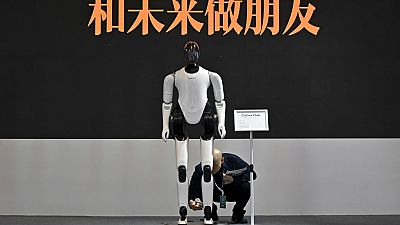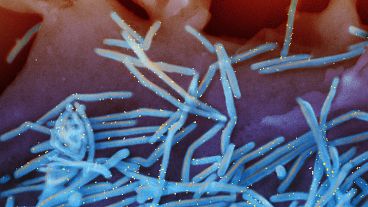The robot tentacle, which measures around 2 mm in diameter, can reach the smallest bronchial tubes in the lungs - unlike current technology.
Researchers in the UK have created a robot tentacle small enough to reach deep into the lungs, where it could detect the first signs of cancer and terminate its cells - effectively treating patients with the disease.
The tiny surgical robot, developed by a team of scientists, engineers, and clinicians based at the University of Leeds’ STORM Lab, is made up of an ultra-soft silicone tentacle that is only 2.4 mm in diameter and is controlled by magnets.
The tentacle consists of a series of interlinked cylindrical fragments which are around 80 mm in length and can move somewhat independently from each other.
According to the study published by the Leeds researchers in the journal Nature Communications Engineering, it can reach 37 per cent deeper than standard equipment and can touch some of the smallest bronchial tubes in our lungs, creating less tissue damage than traditional procedures.
The tentacle has not been tested on living patients, as researchers experimented with the lungs of cadavers, but researchers are collecting data to start human trials and are positive that the technology could revolutionise the way we treat lung cancer.
At the moment, doctors examining patients’ lungs requires a sample of tissue which is obtained using a bronchoscope, an instrument that’s between 3.5 and 4 mm in size and goes through the nose into the bronchial passages.
Because of its size, the bronchoscope cannot travel deeper into the smaller tubes of the lungs - but the robot tentacle can.
Potential to revolutionise lung cancer diagnosis
According to the study, using the tentacle would equate to a 30 per cent increase in the navigation of the bronchial anatomy.
"This is a really exciting development," said Professor Pietro Valdastri, the Director of the University of Leeds’ STORM Lab and a research supervisor, said in a statement.
"This new approach has the advantage of being specific to the anatomy, softer than the anatomy, and fully shape-controllable via magnetics. These three main features have the potential to revolutionise navigation inside the body".
The tentacle is manoeuvered with magnets personalised to the patients and mounted on robotic arms which remain outside the patients, while its route is programmed beforehand.
"Our goal was, and is, to bring curative aid with minimal pain for the patient," said the study’s co-author Giovanni Pittiglio.
"Remote magnetic actuation enabled us to do this using ultra-soft tentacles which can reach deeper while shaping to the anatomy and reducing trauma".
Lung cancer is the second most commonly diagnosed cancer worldwide and the leading cause of cancer death for men and women around the world, according to cancer.net. The World Cancer Research Fund International reports that there were more than 2.2 million new cases of lung cancer recorded in 2020.
In the same year, 1.8 million people died of lung cancer worldwide out of a total of nearly 10 million cancer-related deaths, according to the World Health Organization (WHO).
In a separate study published in the journal Advanced Intelligent Systems, the same researchers at the University of Leeds used two magnetic robot tentacles to move independently of each other to carry out brain surgery on a replica skull.
Going through the nose, the tentacles simulated the removal of a benign tumour at the base of the cranium, with one moving a camera while the other directed a laser onto the tumour.
"This is a significant contribution to the field of magnetically controlled robotics," the paper’s lead author, Zaneta Koszowska said.
"Our findings show that diagnostic procedures with a camera, as well as full surgical procedures, can be performed in small anatomical spaces".



